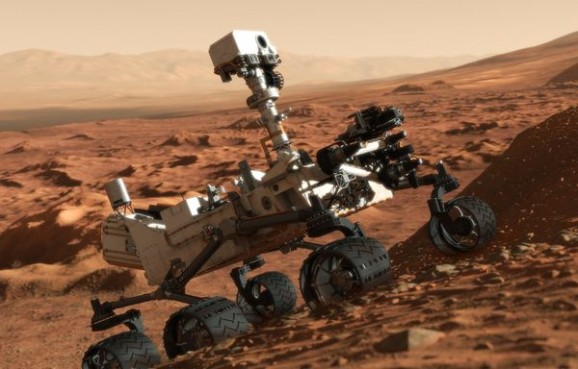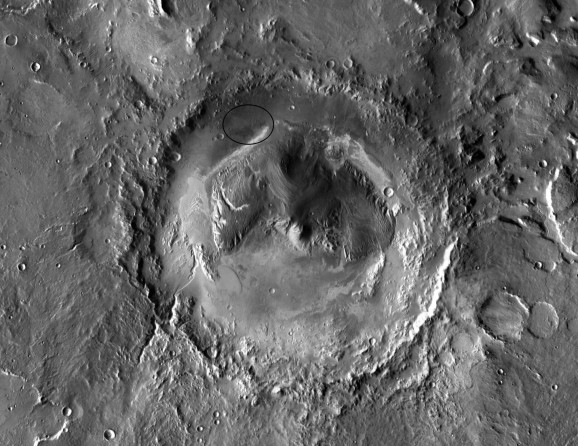Curiosity Rover Discovers This Evidence For Past Life On Mars
This article is more than 2 years old
 One of the goals of the Curiosity Rover is to try to find evidence indicating whether life ever existed on Mars. Thanks to its work so far, we know that Mars still retains water in its surface soil. Scientists also know that Mars used to be warmer and wetter than it is now. Examinations of meteorites of Martian origin reveal organic compounds, suggesting not only that conditions there were once favorable, but that the planet did indeed harbor life. Now, Curiosity has found additional evidence supporting both of those hypotheses.
One of the goals of the Curiosity Rover is to try to find evidence indicating whether life ever existed on Mars. Thanks to its work so far, we know that Mars still retains water in its surface soil. Scientists also know that Mars used to be warmer and wetter than it is now. Examinations of meteorites of Martian origin reveal organic compounds, suggesting not only that conditions there were once favorable, but that the planet did indeed harbor life. Now, Curiosity has found additional evidence supporting both of those hypotheses.
In order to determine whether life has ever existed on Mars, scientists have been looking for evidence of three criteria: water, life-supporting elements (carbon, oxygen, hydrogen, nitrogen, phosphorus), and a long enough period of time in which those conditions were present. It’s that last part that has proven problematic, as previous estimates about the amount of time when those conditions existed was in the neighborhood of hundreds of thousands of years—not very long at all when it comes to creating life out of chemical soup.
But thanks to Curiosity’s efforts, scientists now have new evidence suggesting that Gale Crater, the area in which Curiosity’s target Mount Sharp is located, once had a massive lake, in addition to rivers, deltas, and smaller lakes. They believe sediment from that lake formed the mountain, which is roughly 3 miles tall. What’s more, geological evidence indicates that the lake existed not just for hundreds of thousands of years, but for millions of years, perhaps even 10 million years. This dramatically extends the time period in which Mars could have supported life.

According to NASA’s announcement on Monday, scientists believe that Mars would have been hospitable to life not just in one or two locations, but across the planet. Curiosity’s mission has given scientists clues about where else to look for similar evidence. Even though the new evidence doesn’t present an open and shut case for life on the Red Planet, “Mars is looking very attractive to us as a habitable planet,” says project scientist John Grotzinger. Research increasingly suggests that ancient Mars may have closely resembled ancient Earth, with both planets having similar environments hospitable to life and similar chemical processes that shape and alter their geologies.
Another announcement from NASA is expected to come at a news conference on December 14. This one, some speculate, will offer more details about the possible detection of organic compounds on Mars. Earlier this spring, soil analysis of samples obtained by Curiosity revealed simple organic compounds. The question is whether they were Martian in origin, or whether Curiosity or another craft brought them from Earth. “Our original interpretation—that there was a good chance the organics we were seeing are Martian—hasn’t changed,” says Goddard Spaceflight Center’s Daniel Glavin. NASA will “expand” on this interpretation at the American Geophysical Union meeting on Monday.
We’ll keep you posted on that news. It’s looking more and more likely that our search for life outside of Earth has finally yielded some positive results, even if they’re not in the form large-headed green creatures.












